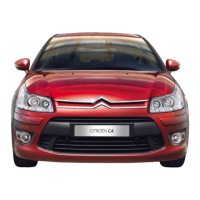26
Eco-driving is a range of everyday practices that allow the motorist to optimise their fuel consumption and CO
2
emissions.
Optimise the use of your
gearbox
With a manual gearbox, move off gen-
tly and change up without waiting.
During acceleration change up early.
With an automatic or electronic gear-
box, give preference to automatic mode
and avoid pressing the accelerator
pedal heavily or suddenly.
Drive smoothly
Maintain a safe distance between ve-
hicles, use engine braking rather than
the brake pedal, and press the accel-
erator progressively. These practices
contribute towards a reduction in fuel
consumption and CO
2
emissions and
also helps reduce the background traf-
fi c noise.
If your vehicle has cruise control, make
use of the system at speeds above
25 mph (40 km/h) when the traffi c is
fl owing well.
Control the use of your
electrical equipment
Before moving off, if the passenger
compartment is too warm, ventilate it
by opening the windows and air vents
before using the air conditioning.
Above 30 mph (50 km/h), close the
windows and leave the air vents open.
Remember to make use of equipment
that can help keep the temperature
in the passenger compartment down
(sunroof and window blinds...).
Switch off the air conditioning, unless
it has automatic regulation, as soon as
the desired temperature is attained.
Switch off the demisting and defrosting
controls, if not automatic.
Switch off the heated seat as soon as
possible.
ECO-DRIVING
The gear shift indicator invites you to
change up: as soon as the indication
to change up is displayed in the instru-
ment panel, follow it straight away.
With an electronic or automatic gear-
box, this indicator appears only in
manual mode.

